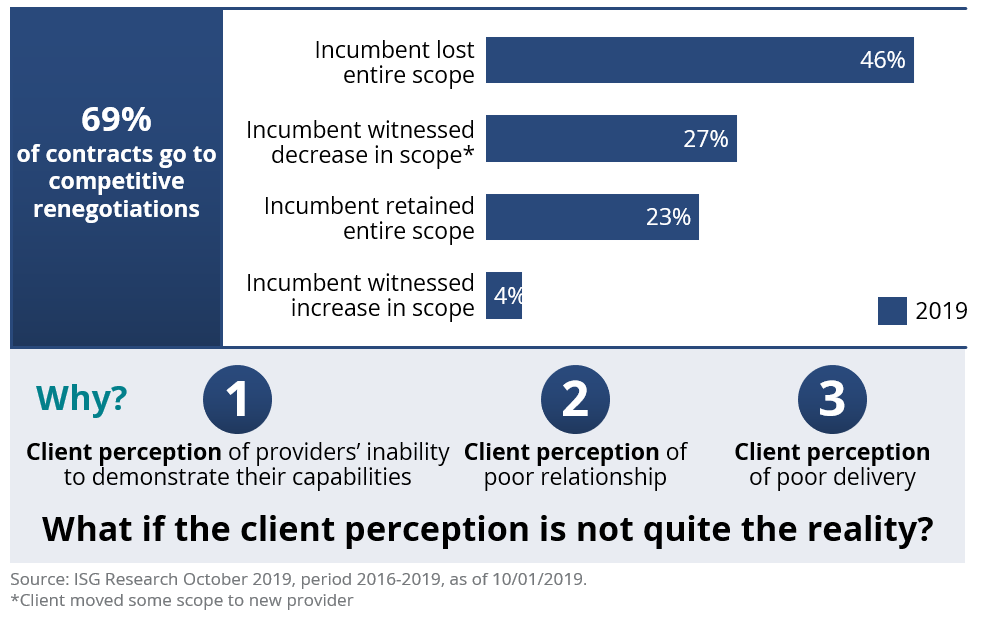Read Build the Best Sourcing Services Relationship Part 1: The Enterprise Challenge
We’ve been supporting and observing sourcing relationships for decades, and when we see good ones, we see one common attribute: strong leadership from both the enterprise and provider sides. The awareness and engagement of the leaders builds trust in the teams and helps reinforce the understanding and awareness of the contract at the foundation of the relationship. Helping teams in the relationship understand the basic terms of reference – in terms of contracted delivery, expectations, and personal interactions – helps both sides get the most out of the services relationship.
Each party has its own goal – the enterprise buyer wants good service and innovation; the provider wants to expand business and find ways to deliver services with higher margins. The tension of these competing interests, especially when the client does not understand the terms of reference for a services relationship (the contract, relationship requirements and measurement) means that often the provider is unable to fully demonstrate its capabilities and is perceived by the client – often wrongly – as not delivering good services.
Our data shows that three quarters of the time, when a contract is competitively rebid, the incumbent loses some or all the scope.

Ensuring Client Relationships Stay Productive
Bringing the parties together is critical not only for the happiness of the relationship, but also for the long-term viability of the engagement for the provider. Here are three ways a provider can ensure its client relationships stay positive, productive and growing.
1. Establish executive connection. Build the relationship with the client executive by engaging them in the governance process, by continually showing thought leadership with ideas that are relevant for the client’s services, technology and management area, and by knowing the client’s business and specific needs. Executive connection should not exclude the working team of either party – they are key stakeholders too! Keeping the relationship on target with a combination of reporting, ideas and insight is essential to keeping the client over the long term.
2. Build the team. It may fall to the provider to lead the building of the team, a key part of the organizational change process. This starts at the service delivery level but needs to extend beyond mere delivery to help the client and provider teams see each other as colleagues. In today’s virtual world, this is harder, but the mechanisms are still the same. Schedule time to have coffee together virtually. Bring ice breaker activities (What is your favorite movie? Have you got children? What are your hobbies?) or fun games for people to play together. It may seem awkward at first, but people will relax and share – and this can help when sticky problems arise and need to be solved.
3. Measure. The provider has a major stake in the success of the relationship and must take a leadership role in measuring both the parties’ understanding of it. This is not customer satisfaction – merely understanding that a client is unhappy does not diagnose the causes. Clients are frequently unhappy because they don’t understand how managed services deals work and feel frustrated and emotional when things do not go as they expect. Helping the client team understand its role in the relationship helps the client as well as the provider improve communication and expectations. This can open the door for the provider to extend its tenure and its ability to bring new services that would not be possible if the client team is frustrated.
If the relationship is to endure, if it is to be extended, save money and make money, and deliver the best value for both parties, both teams must be invested in diagnosing the teams’ understanding of their terms of reference and addressing the gaps. ISG’s Relationship Pulse™ offers a low-impact way for providers to bring deep insight to both the client’s team and their own about where they need to focus to realize the best in each other. Contact us to get started.
Here’s to long and happy services relationships!


